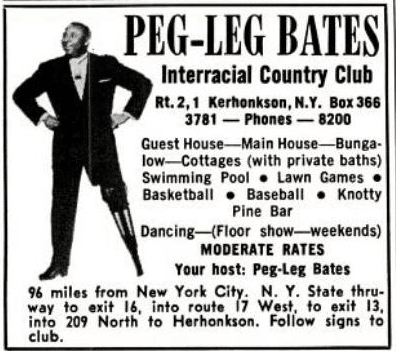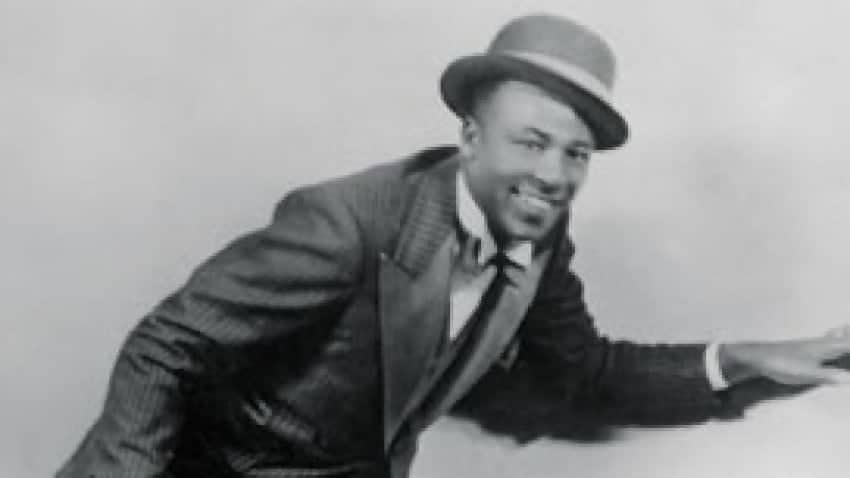Disclosure: This content may contain affiliate links. Read my disclosure policy.
The Catskills offer a complex history that has been shaped by many communities down through the centuries. While best known for its iconic landscapes, the area has also been the site of important and often overlooked stories of Black entrepreneurs, entertainers and vacationers.
Let’s briefly explore the history of Black Americans in The Catskills, including their contributions to the region’s cultural and economic development. This legacy is crucial to fully understanding the Catskills.
Introduction
While segregation and discrimination restricted opportunities for Black Americans in other parts of the country, from the early 20th century until the mid-20th century the Catskills served as something of a haven for African American entertainers and vacationers, as well as Black entrepreneurs.
This post is free to all readers thanks to my supporters. Get full access to this website today and enjoy great supporter benefits.
Who Was Clayton “Peg Leg” Bates?
“Peg Leg” Bates was a highly accomplished and well-respected performer who gained international fame a tap dancer. He was one of the most popular and beloved entertainers of his time, and performed for audiences around the world, including in the United States, Europe, Asia, and Australia.
BTW, you might also enjoy…
- NEW › New York Hike Finder Tool
- CATSKILLS › Escarpment Trail Guide
- STAY › Find Your Perfect Catskills Stay
- ADIRONDACKS › Dix Range from Elk Lake
- ENTERTAINMENT › 15 Best & Worst Hiking Movies
- Follow › My Instagram @TotalCatskills
- Follow › My Substack @TotalCatskills
- Follow › My writing for Times Union
Bates was particularly famous for his signature tap style, which incorporated his wooden leg. He was known for his incredible skill and agility, and an infectious personality and sense of humor.
“I depend on novelty steps a two-legged man couldn’t do. In one routine, I leap five-and-a-half feet in the air and make a complete turn. If I’m in good trim I can leap as tall as I am, five feet eleven.”

Image from WikiPedia via Creative Commons License.
For much of his professional life, Bates was denied the right to spend the night at the resorts where he performed. But he was also a trailblazer for Black performers, who also faced significant discrimination and segregation in the entertainment industry at the time. Bates performed on The Ed Sullivan Show at least 22 times. He broke barriers. He paved the way for future generations of Black performers. And he remains an important figure in the history of American entertainment.
Bates grew up poor, the child of sharecroppers. He first came to the Catskills in the 1940’s. He initially performed at Brown’s Hotel in Loch Sheldrake. His energetic and lively tap dancing quickly became a favorite among audiences, and he was soon booked at other hotels and venues throughout the region.
Over time, Bates became one of the most well-known and beloved performers in the Catskills. He continued to perform here throughout the 1940’s, 1950’s, and 1960’s. Even after the era of the Catskill resorts began to decline, he remained a popular performer.
How Did Peg Leg Bates Lose His Leg?
Bates lost his left leg in a cotton gin accident at the age of 12. He was working on a farm in Fountain Inn, South Carolina, where he grew up. His left leg became entangled in the machinery and, as a result, was eventually amputated below the knee.
Despite the loss of his leg, Bates was determined to continue dancing. He learned to dance with a wooden leg, which he had made himself, and he went on to become a celebrated tap dancer, performing in venues across the United States and around the world.
“Peg Leg” Bates in Kerhonkson
In the 1950s, Bates purchased a 460-acre farm in Kerhonkson, which he named the Peg Leg Bates Country Club. The club was built to be a vacation destination for African Americans, who faced discrimination and segregation at many other resorts and hotels at the time.

The Peg Leg Bates Country Club operated for many years, and became a beloved local institution. It featured a hotel, swimming pool, golf course, and other amenities, and it became a popular destination for Black families from all over the Northeast. During its time, it was the largest Black-owned and operated resort in the country.
Although the club is no longer in operation — it closed for good in the mid-1980’s — Bates’ legacy lives on in the community, and he is remembered as a pioneering character in the history of Black entrepreneurship and entertainment.
Why Did the Peg Leg Bates Country Club Close?
For many of the same reasons that the Catskills as a destination fell out of favor. The Catskill resort industry was a primary driver of tourism and economic activity in the region.
Three things did it in…
- The invention of air-conditioning meant that fewer people needed to escape New York City to get relief from the worst of the summer heat (and the summer smells);
- The increasing availability of affordable air travel opened up the world to a multitude of more attractive destinations available to boomers;
- Demand for segregated vacation destinations like the Peg Leg Bates Country Club began to decline.
As the Catskills era came to an end many of the hotels and resorts in the area, including the Peg Leg Bates Country Club, struggled to stay afloat.
Despite its closure, the club remains an important part of the history of Kerhonkson, and of the Catskills, and it is remembered as a pioneering and trailblazing institution in the history of Black entrepreneurship and entertainment.
McKenley Hollow in Oliverea
Finally, I’d like to mention the McKenleys of Oliverea. Dr. McKenley is the Black man bottom right in this photo…

Dr. McKenley is an early example of Black success in the Catskills. In 1902 he bought 100 acres in Oliverea and, with his wife, operated a very popular resort there for many years.
We mountain hikers can take special note: McKenley Hollow, which we sometimes use as a route to Balsam and Eagle mountains, is named after Dr. McKenley.
Conclusion
The history of African Americans in The Catskills is a powerful example of Black excellence, and of resilience in the face of discrimination. Despite facing significant barriers, these individuals were able to create thriving businesses and communities. They have left a lasting impact on the region’s culture and history.
I’m sure I’ve scratched only the surface of this topic. If you know of other connections between Black history and the Catskills, please reach out. Drop a comment below, or use my contact form to send a note.
By recognizing and preserving the history of African American excellence in The Catskills, we can ensure that this legacy remains a source of inspiration and pride for generations to come.
Read More
Check out the history tag on this website for a deeper dive.
Get full access…
Get instant access to the full version of this site and enjoy great supporter benefits: full galleries, full trail notes, early access to the latest content, and more.
Hot on the website right now…
Follow for more…
Follow my @TotalCatskills content on Instagram for regular hiking inspo and safe, inclusive community.


The Village of Catskill in Greene County NY has a street that is known to have had had Black housing. Homes. One house is called The English House, a former tourist house. The backyard has access the the railroad which runs to this day. It is now for sale. There’s no parking lot’s available, the house has a phone pole very close by and the house needs lots of work but is gorgeous! Now my secret is out as I want to buy it! North Street, in village not mountains of Catskill.
Hah. But interesting info. Thank you.
What happened to the Negro resort, “SUNSET ACRES”
Can you say some more about this resort? I would love to dig in a little more…
The scholar Myra B. Young Armstead, who grew up in South Fallsburg, wrote SEEKING OUR FORTUNE IN THE NORTH: The African-American Population of Sullivan County, NY, from 1930 to 1980, which is available from Sullivan co Historical Museum in Hurleyville, NY. Very enlightening!
Fantastic rec. Thank you!